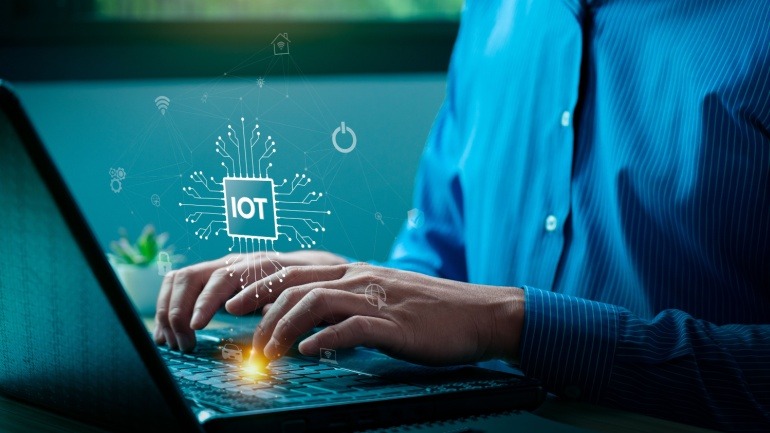After years of hype, we are looking forward to the impending rollout of 5G networks. This transformational technology will lay the foundation for many future services and change how we view productivity. But how will 5G affect you?
Speed and responsiveness
It is not yet possible to state definitively what network speeds will be reachable, but it is fair to say that the biggest benefit of 5G to the average user will be the speed of this service. Early estimates have shown that data rates could be up to a thousand times faster than 4G, potentially exceeding 10 Gbps. In practical terms, everything we currently do on the Internet would be significantly faster, and these speeds would enable users to download an entire HD film in a few seconds.
Responsiveness or latency refers to the time between a request and a response. The ultra-low latency of 5G will result in response times of 1-2 milliseconds (0.001 or 0.002 seconds) as compared to 4G’s average 50 ms (0.05 seconds). This low-latency feature will result in obvious user-experience improvements, and will also enable advanced technologies such as self-driving cars, remote surgery and virtual reality.
Home broadband and “last-mile” services
The requirement for high-bandwidth home Internet service is fast becoming a standard as high resolution movies, game streaming and virtual reality grow in popularity. 5G will be able to deliver Internet to the home via a direct wireless connection, serving as a logical replacement for traditional, wired home services. The performance of 5G allows multiple devices to be simultaneously connected to the Internet, without suffering from bandwidth-related issues such as congestion and video buffering.
The introduction of 5G could also provide a solution to the “last-mile” issue, which generally refers to the non-availability of connectivity in sparsely populated areas due to the lack of wired infrastructure. Using 5G technology, it will be possible to build powerful wireless hotspots, delivering high-bandwidth connectivity in non-urban areas or to smaller communities.
Devices with embedded connectivity and the IoT revolution
The Internet of Things (IoT) continues to rapidly spread over the home and enterprise, predominantly supporting the integration of sensors and sensor-based systems. It is estimated that by 2020, there will be an average of 6-7 IoT devices per person. 5G technology will be at the heart of this massive proliferation of connected devices, and is seen as a major enabler and key driver of the growth of IoT.
The term “Industry 4.0” refers to the trend of increased automation amongst manufacturers and consumers, and will result in vastly improved productivity, communication and monitoring, as well as new levels of performance analysis, self-diagnosis and optimisation of processes. 5G will play a major role in these advancements, taking hyper-connectivity to new levels in applications such as smart homes, buildings and cities, and control of autonomous cars.
New and improved use-cases
The power of 5G will enable a large number of use cases that were not possible or were limited when using 3G and 4G technology.
Self-driving cars have commanded significant attention recently, and many involved in the development of the applicable technologies do not believe that the operation of a fully autonomous vehicle is possible without a 5G network. For a successful implementation of this use case, vehicles must be able to communicate with other vehicles and road-side sensors through an instantly responsive wireless network with ubiquitous coverage.
Haptic feedback refers to the utilisation of touch sensations, and allows end users to receive tactile information through robotics and haptic equipment. An essential requirement for this technology is the ability to transmit touch in perceived real time, and the high-speed and low-latency capabilities of 5G are indispensable for the evolution and emergence of the “Tactile Internet”.
There are also bold predictions about 5G’s influence on medicine. Remote surgery will be enabled by the high-performance characteristics of the wireless network, coupled with effective haptic feedback. Wearable or implanted IoT devices will allow our health to be constantly monitored, and artificial intelligence applications will diagnose illnesses before they are apparent.
Both augmented and virtual reality rely heavily on high speed, low latency communication services, and the 5G network will deliver the connectivity required to unlock the full potential of these technologies. The power of AR glasses will finally come of age, merging digital visual and audio content into the user’s real-world environment for personal and professional applications. 5G services will optimize the content feeds for VR appliances, creating more realistic three-dimensional, computer simulated environments and greatly improving the virtual reality experience.
Promises and reality
5G promises the development of radically new services and products, and a substantial improvement to those services already commercially available. The first real 5G specification was only completed late in 2017, and there are many technical, strategic, financial and operational hurdles to overcome in implementing this technology. However, there is an overall excitement and enthusiasm towards 5G and its potential influence on all of our lives. Clearly, this technology will make a big splash and usher in a new and innovative wave of wireless usage when it is introduced in the 2020s.







